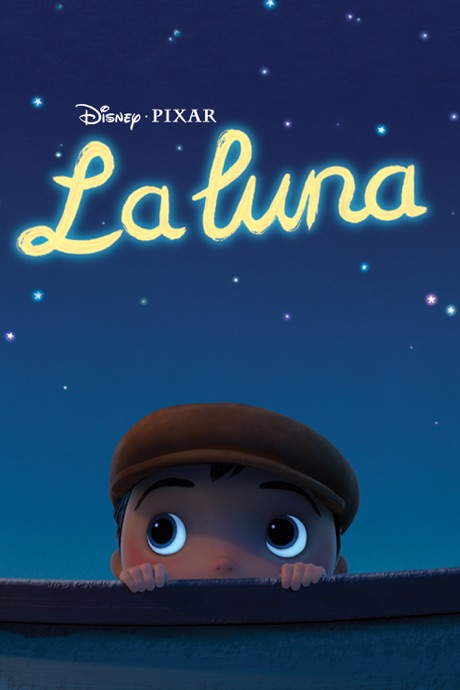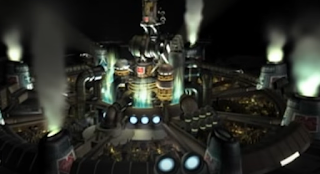The problem with the fancy play button is that we are good at movies. We generally know how to tell an engaging movie, whether on the big screen or in a recurring Netflix or HBO series. But movies are entirely passive mediums for the viewer: the director determines what is on screen and where the camera is facing at all times. In other words, the director is deciding for you, the viewer, what is worth viewing at each moment of a film. Although this enables artistic control of the story, it deprives the viewer of any kind of agency.
The curse of being good at movies is that generally we transition really awkwardly to mediums that suddenly allow viewer agency. This happens probably first in video games. The late 90's and early '00's were the era of long cut scenes. These were essentially mini-movies embedded inside games. You had to complete the game level to be "rewarded" with the movie cutscene. Of course, in most cases the cutscenes were less interesting than the game, and felt less like a reward and more like a chore you had to sit through to do the fun stuff again.
One of my favorite cutscenes from Final Fantasy VII (1997), panning over Midgar. Taken from this 40 min YouTube video that compiles all the cutscenes into a movie: https://www.youtube.com/watch?v=uFo8qUWEUr4.
In these games, the story was often most readily conveyed in the cut scenes and not the game itself. So if you really wanted to story, you would need to watch all the cut scenes in sequence, i.e. watch a movie. But you couldn't watch the movie itself, you had to play the game in between scenes. Thus playing the game and completing levels acted like a really fancy play button that you had to press to move the story along.
Game have learned how to move past this problem, as a now relatively mature form of media. Whether they've learned how to embed stories within the world itself (for a beautiful example, "Gone Home") or whether they've constrained the timing of the interaction points in a movie-like experience to match the flow of a movie and feel non-disruptive (e.g. most of the Tell-tale games) or whether the story itself is a construct of your actions (e.g. Dwarf Fortress). In all these examples, games learned how to move past the fancy play button to create stories in ways that made sense for their medium, and not a movie-medium.
 |
| Screenshot from Gone Home, showing one of the rooms in the game over which the story plays out. Taken from the screenshots used to advertise the game on Steam. |
Next came the ipad- or more generally any device with a touch screen. One of the first really interesting story moments to come about was a app called "Luna." Although a beautiful story, nothing could embody the fancy play button more than this story. The story proceeded, until it hit a stopping point, creating some task you needed to perform to advance the story forward. In essence, a fancy way to try to click play and unpause the narrative. I understand it is building off of the children's interactive story books medium- but my opinion is that it did so poorly, and in a way that disrupted the natural flow of the story.

The cover of the La Luna game from the iOS App Store. https://itunes.apple.com/us/movie/la-luna/id733194113.
Next, was what happened in the educational space. This was sort of a reverse situation- a world in which we are typically bad at movies. Instead of trying to make educational movies actually tell interesting stories in an engaging way, some companies made their business off of making really fancy educational play buttons. For example, Zaption allows a teacher to add multiple choice questions, which a viewer must answer correctly, to finish the movie. Although I wouldn't exactly call this solution "fancy" it certainly falls into the category of click to keep playing buttons. The argument can of course be given that Zaption is not interrupting the flow of the story, because the story did not have a good flow to begin with, which is a fair point- but my counterpoint again would be to make a story with a good flow in the first place.
 |
| An image from Zaption, taken from https://venturebeat.com/2016/06/30/workday-acquires-online-learning-company-zaption-will-shut-it-down-on-september-30/. |
Games learned to solve this problem as they matured as a medium- will VR find a solution too? What does a narrative that uniquely takes advantage of the affordances of VR look like?

1 comment:
According to Stanford Medical, It is really the SINGLE reason this country's women get to live 10 years more and weigh on average 42 pounds less than us.
(And by the way, it has absolutely NOTHING to do with genetics or some secret-exercise and EVERYTHING about "HOW" they eat.)
P.S, I said "HOW", not "WHAT"...
CLICK on this link to uncover if this quick questionnaire can help you unlock your real weight loss possibilities
Post a Comment